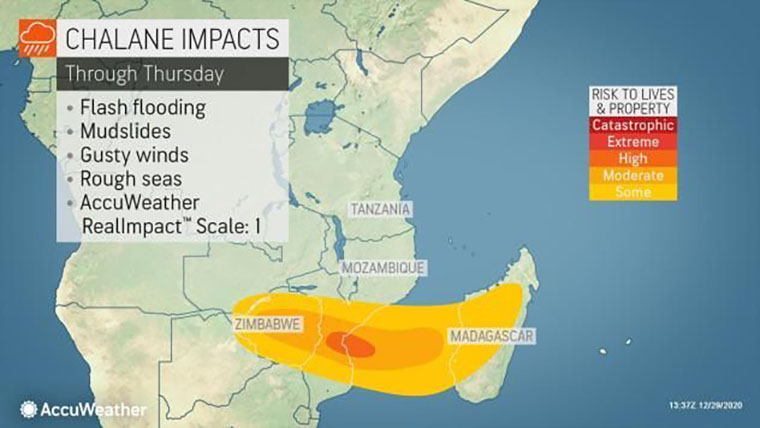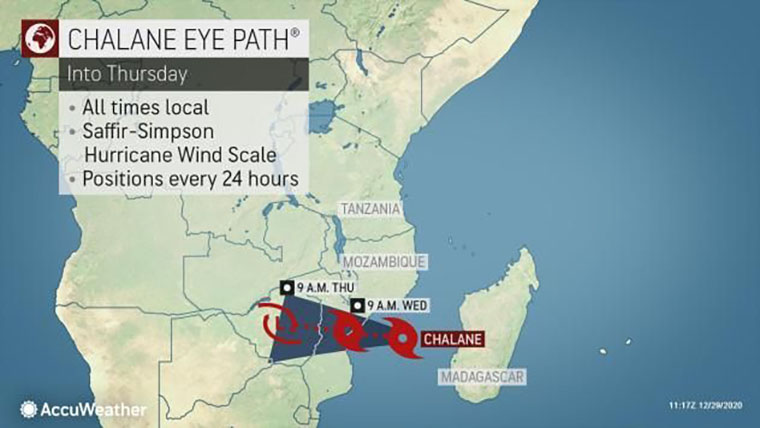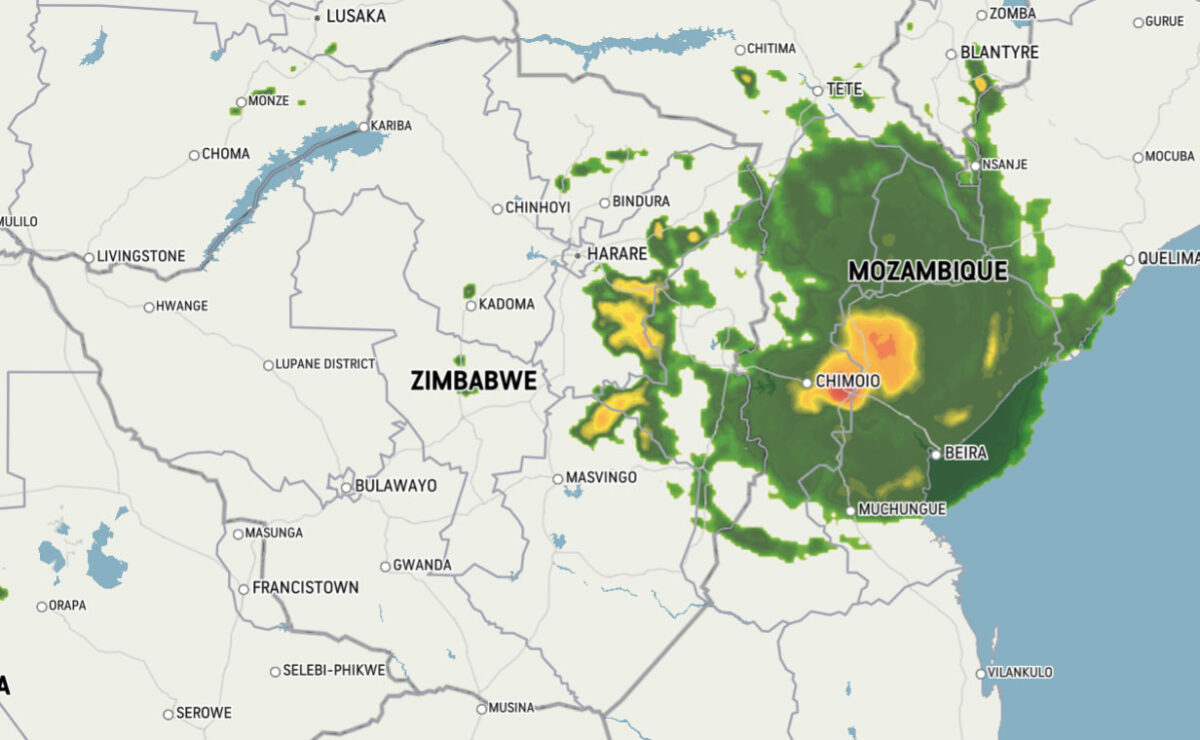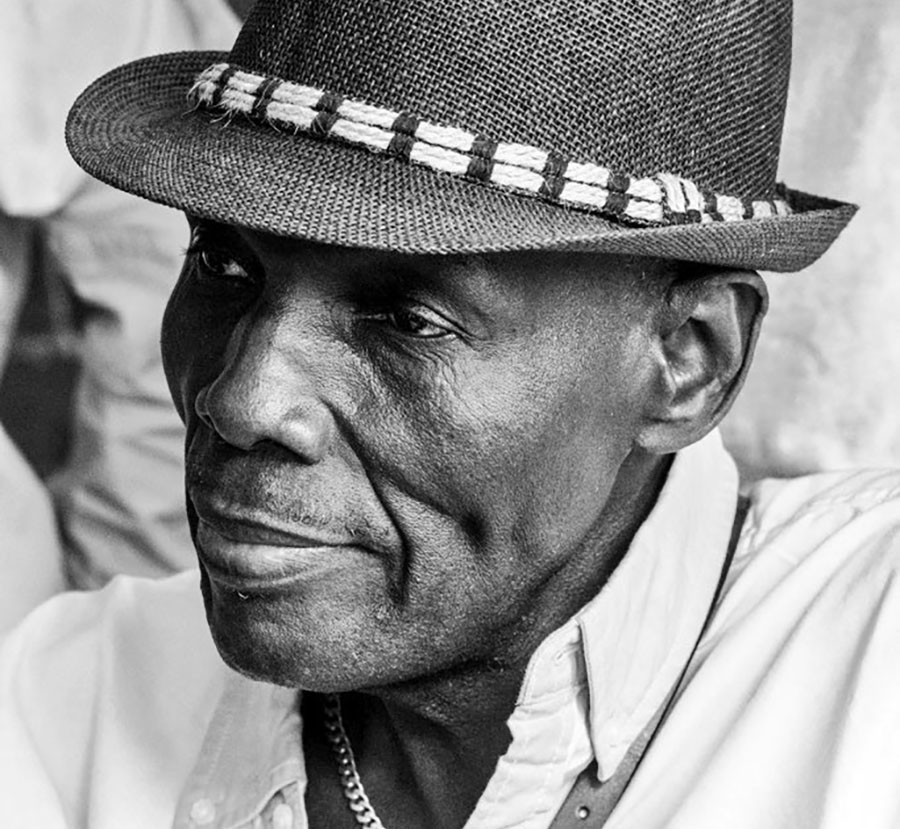HARARE – Zimbabwe braced for impact on Wednesday as Cyclone Chalane swept in from Mozambique, although with reduced severity.
Hundreds of people – some still living in temporary accommodation after the devastation of Cyclone Idai two years ago – were evacuated to higher ground in Manicaland province.
Mutare and Bulawayo city authorities issued alerts for their residents.
The Meteorological Services Department said Chalane’s impact would be less severe than originally feared after it was downgraded.
In an early morning update on Wednesday, it said the former tropical storm is “expected to rapidly dissipate, with windspeed reducing from the current 50 knots to 25 knots” as it tracks westward over the hills of Manicaland during the next 12 hours.
The Met warned that rains, particularly in Manicaland on the border with Mozambique, would result in “reduced visibility and flash flooding in areas with poor drainage as well as along river basis.”
“Mudslides and landslides as well as collapse of walls due to excessive moisture remain probable, thus monitoring your immediate environment is essential,” the weather service warned, while urging people to stay indoors.
Edgar Seenza, the Manicaland provincial development director said they had evacuated 121 people around Mutambara Mission and St Patrick’s High School.
“Chipinge, Chimanimani and Mutare started receiving rains early morning today. However, some people from Chimanimani preferred not to go to the evacuation centres saying they would rather go to relatives in areas they consider safe. A bus is on standby in case they changed their minds,” Seenza said Wednesday.


After forging a path toward Madagascar last week, Chalane has become the first land-falling cyclone of the season in the southern Indian Ocean.
Chalane tracked across the island of Madagascar over the weekend as a tropical depression, bringing areas of heavy rain and gusty winds to the region.
On Monday, Chalane emerged over the Mozambique Channel and into an environment conducive for tropical development. Warm waters and a lack of vertical wind shear allowed the storm to strengthen into a severe tropical storm by Monday night.
The main threat from Chalane across Mozambique will be heavy rainfall, stated AccuWeather Lead International Meteorologist Jason Nicholls. However, the storm will be moving at a decent pace, so widespread rainfall totals are forecast to be around 50-100 mm.
These rainfall totals were expected over central Mozambique and into Zimbabwe with the highest totals following the centre of the storm from late Tuesday night though Thursday.
Gusty winds are also expected across Mozambique and Zimbabwe as Chalane forges a path inland with the strongest winds occurring near the coast where the storm made landfall on Wednesday morning.
Flash flooding will be possible from near landfall and inland into Zimbabwe along the storm’s track, even after it weakens below tropical storm intensity.
















